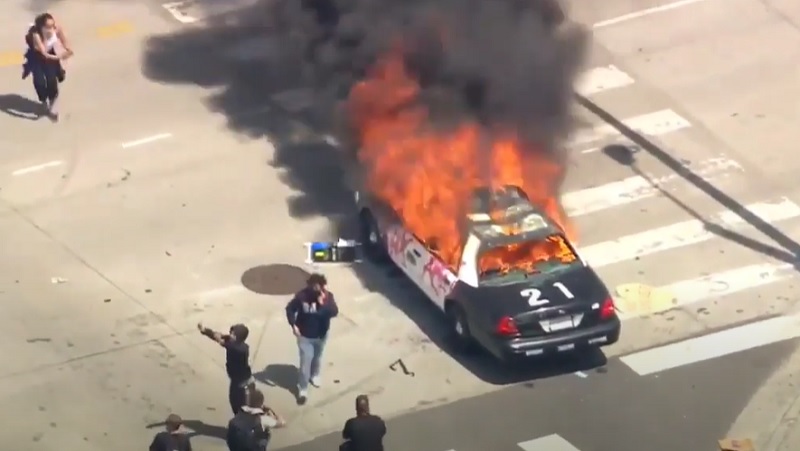
Compliance is a dirty word to Americans. We want to hold to our rebellious ancestry and our modern narcissism. Add to this the oft-repeated narrative that the police will kill you for having a license plate light burned out and the message that if the cops fight you they’ll have to fight everyone in the riots to follow and it is no mystery why resisting lawful commands is an epidemic.
I’m not sure if there are any research statistics on the matter, but I guarantee if you ask any law enforcement officer who has worked patrol for at least ten years if non-compliance and disrespect have dramatically increased, they’ll tell you that it is more frequent than ever.
Disrespect is a Constitutional right, but non-compliance with a lawful order is not. State laws and well-settled court cases define when a citizen is required to do what a police officer orders them to do. It is part of our social contract with others that we accept limitations on otherwise unbridled liberty for the good of all. We can debate the extent and philosophy of that idea forever, but we all know that if we don’t allow momentary inconvenience to promote an orderly society in a complex world chaos and criminality will follow. If the reader disagrees with that foundational statement, please read your newspaper.
When I first started, my mere appearance in uniform usually brought a pause in the disturbance, like the bell at a boxing match telling combatants to go to their corners where they could bounce and snarl all they wanted, but the fighting had to stop. Granted, that was not always the case, but even in my rookie days at 5’10” 140 pounds, and cherubic 21-year-old face, most folks had enough fear or enough respect to pause and pay attention. We’ve lost much of that in the current state of things.
Although there have been many graphic representations in police training to teach police officers how to gain compliance when enforcing the laws, a foundational framework is known as The Use of Force Continuum (UFC) which has been used for decades. The UFC is often visualized as a stairway with each level of resistance and officer response one step at a time. For a variety of reasons, this framework has been modified and even rejected as more helpful models have been developed represented by a ladder, a wheel, a triangle, a Venn diagram, and other illustrations. In recent years, the concept of de-escalation has been more fully integrated into these models, but de-escalation has been implied and practiced since the first person to ever wear a badge realized that no use of force in gaining compliance is optimal.
In most of these models, including the UFC, the first level of gaining compliance is known as officer presence. The very appearance of an officer of the law should remind a citizen that the law and social convention require submission to lawful authority. When a citizen accepts this legal and moral requirement, further use of persuasion and physical force is not needed.
An essential component of officer presence is not merely showing up, but doing so with a degree of gravity in attitude and appearance. It is easier to respect authority when all of the symbols afforded to peace officers are present. This includes posture, confidence, patience, and physical appearance enhanced by a uniform worn in such a way that the officer himself shows respect for their appearance. While there is a balance between an authoritative appearance and an authoritarian attitude, an officer should project the expectation that things are to be brought under control and handled efficiently and professionally, just as other professions, whether a doctor, lawyer, or plumber should project the confidence that the business at hand will be handled well.
If officer presence fails, then verbal commands follow, then hands-on techniques from joint locks to pressure points to strikes, then stepping up to impact weapons, and ultimately the last resort of deadly force. This is why officer presence and citizen compliance are so critical in avoiding physical force. This is also why non-compliance after a pedestrian contact or traffic stop can escalate – not due to the officer doing their job, but due to the citizen’s refusal to obey the law regarding compliance.
The increasing problem of non-compliance and false narratives (driver shot for broken taillight!) has resulted in some prohibitions on traffic enforcement and the reluctance of many officers to make a contact at all. This spiral is a contributing factor to the rise in crime as police officers are, by policy or by fear of reprisal, deciding it just isn’t worth the battle.